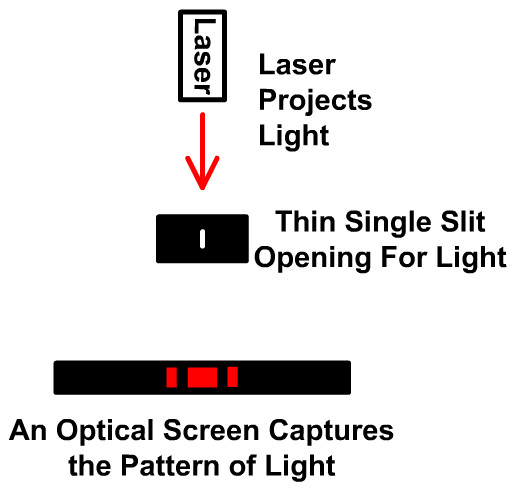

The Vienna team sent a collimated beam of carbon-60 molecules through a slit made of silicon nitride and detected the interference pattern by ionizing the molecules with a laser and then counting the ions. Now Markus Arndt, Anton Zeilinger and co-workers at the University of Vienna in Austria have observed wave-like behaviour in a beam of carbon-60 molecules - which are an order of magnitude larger than any other particles for which quantum interference effects have been observed (M Arndt et al. Wave-particle duality has been observed with electrons, atoms and small molecules. The formation of an interference pattern when a beam of particles passes through a double slit is the classic signature of the wave-particle duality of quantum particles. Webinars Tune into online presentations that allow expert speakers to explain novel tools and applications.Video Watch our specially filmed videos to get a different slant on the latest science.Podcasts Our regular conversations with inspiring figures from the scientific community.Audio and video Explore the sights and sounds of the scientific world.Women in physics Celebrating women in physics and their contributions to the field.Supercool physics Experiments that probe the exotic behaviour of matter at ultralow temperatures depend on the latest cryogenics technology.The science and business of space Explore the latest trends and opportunities associated with designing, building, launching and exploiting space-based technologies.Revolutions in computing Find out how scientists are exploiting digital technologies to understand online behaviour and drive research progress.Nanotechnology in action The challenges and opportunities of turning advances in nanotechnology into commercial products.#BlackInPhysics Celebrating Black physicists and revealing a more complete picture of what a physicist looks like.Artificial intelligence Explore the ways in which today’s world relies on AI, and ponder how this technology might shape the world of tomorrow.Collections Explore special collections that bring together our best content on trending topics.Innovation showcases A round-up of the latest innovation from our corporate partners.Projects and facilities Follow the latest progress at the world’s top scientific experiments.Policy and funding Understand how emerging policy changes could affect your work and career.Education and outreach Learn about novel approaches to educating and inspiring the scientists of the future.Business and innovation Find out how recent scientific breakthroughs are driving business innovation and commercial growth.Impact Explore the value of scientific research for industry, the economy and society.Personalities Find out who’s doing what in industry and academia.Interviews Discover the views of leading figures in the scientific community.Opinion and reviews Find out whether you agree with our expert commentators.Careers Consider your career options with valuable advice and insightful case studies.People Meet the people behind the science.Events Plan the meetings and conferences you want to attend with our comprehensive events calendar.Blog Enjoy a more personal take on the key events in and around science.

Analysis Discover the stories behind the headlines.Features Take a deeper look at the emerging trends and key issues within the global scientific community.News Stay informed about the latest developments that affect scientists in all parts of the world.Research updates Keep track of the most exciting research breakthroughs and technology innovations.Latest Explore all the latest news and information on Physics World.We show that the inclusion of the spin-degree-of-freedom, when coupled to the motion direction of the carrier-a typical situation that occurs in systems with spin–orbit interaction-leads to a modification of the interference and diffraction patterns that depend on the geometrical parameters of the system. We investigate the effects of spin-momentum locking on the interference and diffraction patterns due to a double- or single-slit in an electronic Gedankenexperiment. SPIN-CNR, Via Dodecaneso 33, 16146, Genoa, Italy IKERBASQUE, Basque Foundation of Science, 48011, Bilbao, Basque Country, SpainĪix Marseille Univ, Universitá de Toulon, CNRS, CPT, Marseille, Franceĭipartimento di Fisica, Università di Genova, Via Dodecaneso 33, 16146, Genoa, Italy van den Berg 1, Dario Ferraro 3 ,4 ,5, Jérôme Rech 3, Thibaut Jonckheere 3 and Thierry Martin 3ĭonostia International Physics Center (DIPC), Manuel de Lardizbal 4, 20018, San Sebastián, Spain


 0 kommentar(er)
0 kommentar(er)
